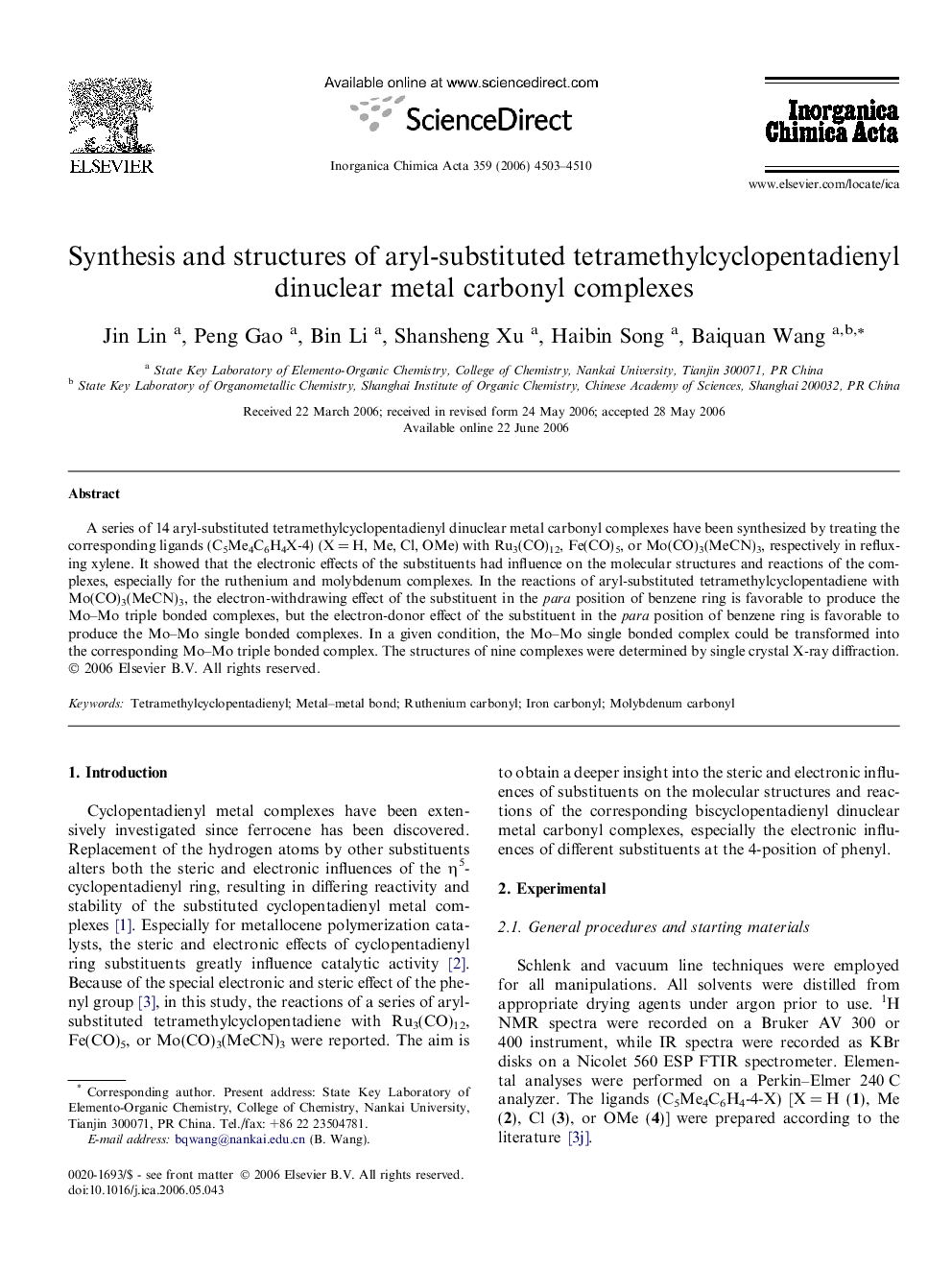| Article ID | Journal | Published Year | Pages | File Type |
|---|---|---|---|---|
| 1312821 | Inorganica Chimica Acta | 2006 | 8 Pages |
A series of 14 aryl-substituted tetramethylcyclopentadienyl dinuclear metal carbonyl complexes have been synthesized by treating the corresponding ligands (C5Me4C6H4X-4) (X = H, Me, Cl, OMe) with Ru3(CO)12, Fe(CO)5, or Mo(CO)3(MeCN)3, respectively in refluxing xylene. It showed that the electronic effects of the substituents had influence on the molecular structures and reactions of the complexes, especially for the ruthenium and molybdenum complexes. In the reactions of aryl-substituted tetramethylcyclopentadiene with Mo(CO)3(MeCN)3, the electron-withdrawing effect of the substituent in the para position of benzene ring is favorable to produce the Mo–Mo triple bonded complexes, but the electron-donor effect of the substituent in the para position of benzene ring is favorable to produce the Mo–Mo single bonded complexes. In a given condition, the Mo–Mo single bonded complex could be transformed into the corresponding Mo–Mo triple bonded complex. The structures of nine complexes were determined by single crystal X-ray diffraction.
Graphical abstractA series of 14 aryl-substituted tetramethylcyclopentadienyl dinuclear metal carbonyl complexes have been synthesized by treating the corresponding ligands (C5Me4C6H4X-4) (X = H, Me, Cl, OMe) with Ru3(CO)12, Fe(CO)5, or Mo(CO)3(MeCN)3 in refluxing xylene, respectively.Figure optionsDownload full-size imageDownload as PowerPoint slide
